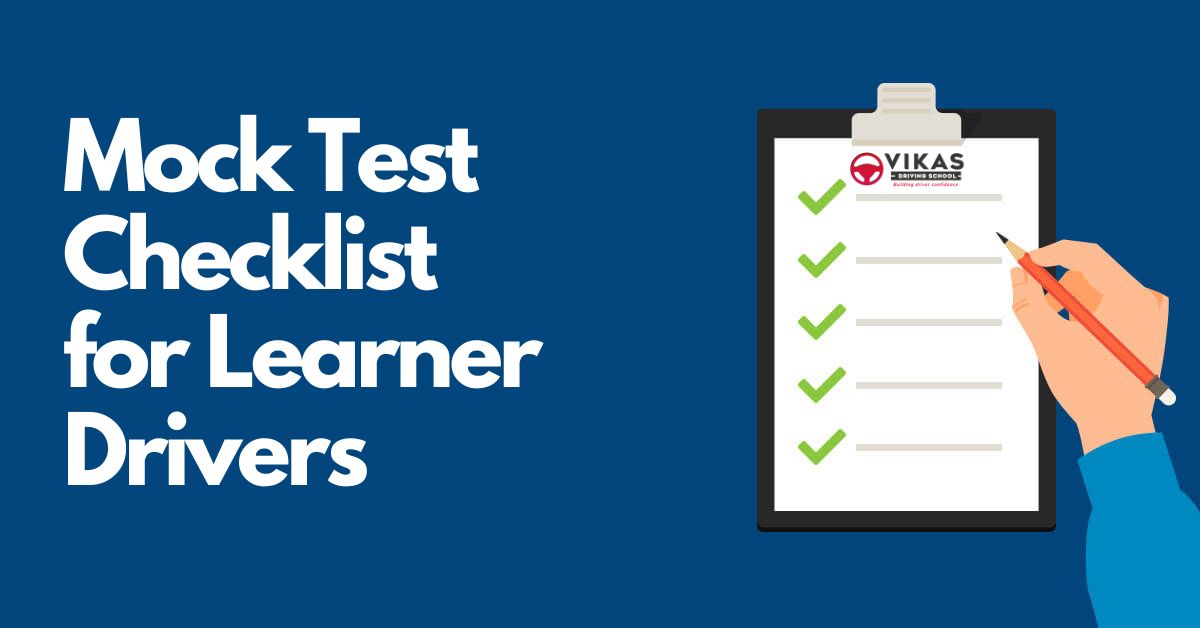If you’re on the journey to getting your driver’s license, then you’re likely aware of the importance of mock tests. These practice exams are a crucial step in preparing for your driving test in Melbourne and can significantly boost your chances of passing. In this comprehensive guide, we’ll provide you with the ultimate mock test checklist for learner drivers. We’ll cover the most important points you should focus on to ensure you’re well-prepared and ready to ace your Vic Road driving test.
1. Know the Test Format Inside and Out:
Before you dive into mock tests, it’s essential to understand the format of your actual driving test. Most driving exams consist of both a written theory test and a practical driving test. Your first step should be to thoroughly familiarize yourself with the structure of these tests.
- Written Theory Test: This portion typically includes multiple-choice questions, hazard perception tests, and case studies. Make sure to obtain a copy of the official driver’s handbook or manual for your area and study it extensively. You can also find online resources and practice tests that simulate the actual format.
- Practical Driving Test: Understand the key components of the practical driving test in your region. Be aware of the specific maneuvers you’ll be asked to perform, such as parallel parking, three-point turns, and lane changes. Practice these maneuvers thoroughly.
2. Simulate Real Test Conditions:
To make the most of your mock tests, it’s crucial to replicate the real test conditions as closely as possible. This includes both the written theory test and the practical driving test.
- For the Written Theory Test: Create a quiet and distraction-free environment. Set a timer to mimic the actual time constraints, and avoid any external resources while taking the test. This helps you get used to the pressure of the real exam.
- For the Practical Driving Test: Practice in conditions that are similar to those you’ll encounter on test day. Drive in various weather conditions, during rush hour, and on diverse road types. Get a feel for different situations to ensure you’re prepared for anything.
3. Master Safe Driving Techniques:
Your driving test will not only evaluate your ability to drive but also your commitment to safety. To excel in this aspect:
- Obey Traffic Laws: Make sure you understand and follow all traffic laws. This includes speed limits, right-of-way rules, and signaling.
- Practice Defensive Driving: Learn to anticipate the actions of other drivers and be ready to react to unexpected situations.
- Vehicle Maintenance: Ensure your vehicle is in excellent working condition. Check your lights, brakes, tires, and other crucial components regularly.
4. Hazard Perception Training:
Hazard perception is a significant part of most driving tests. This skill involves identifying potential risks and reacting appropriately. To excel in this area:
- Online Hazard Perception Tests: Utilize online hazard perception tests to practice your skills. These tests are invaluable in preparing for the real thing.
- Focus on Anticipation: Pay attention to the road ahead and anticipate potential hazards. This includes pedestrians, cyclists, other vehicles, and changing road conditions.
5. Mock Driving Tests:
Taking mock driving tests is perhaps the most critical part of your preparation. These practice exams simulate the real thing, giving you a chance to experience the pressure and evaluation of the official test.
- Take Mock Tests Regularly: Schedule and take mock driving tests as often as possible. You can find them at driving schools or even book one with a licensed driving instructor.
- Learn from Your Mistakes: After each mock test, review your performance. Identify your weak points and work on improving them. Focus on areas where you received critical feedback during the mock test.
6. Overcome Test Anxiety:
Test anxiety can be a major hurdle for many learner drivers. To combat this issue, consider the following:
- Relaxation Techniques: Before the test, practice relaxation techniques such as deep breathing and visualization to calm your nerves.
- Positive Mindset: Believe in yourself and your abilities. A positive mindset can make a significant difference in how you perform on test day.
7. Time Management:
Time management is crucial for both the written theory test and the practical driving test.
- Written Theory Test: Budget your time wisely. Don’t get stuck on difficult questions; move on and return to them later if necessary.
- Practical Driving Test: During the practical test, manage your time effectively. Don’t rush, but also don’t waste time overthinking your actions.
Conclusion:
By following this ultimate mock test checklist by Vikas Driving School, learner drivers can significantly enhance their chances of passing their driving exams. Remember to understand the test format, simulate real test conditions, master safe driving techniques, focus on hazard perception training, take mock driving tests regularly, overcome test anxiety, and practice good time management. These steps, when followed diligently, will help you build confidence and competence to become a safe and responsible driver.

